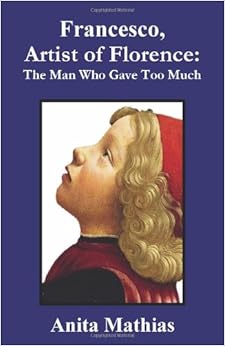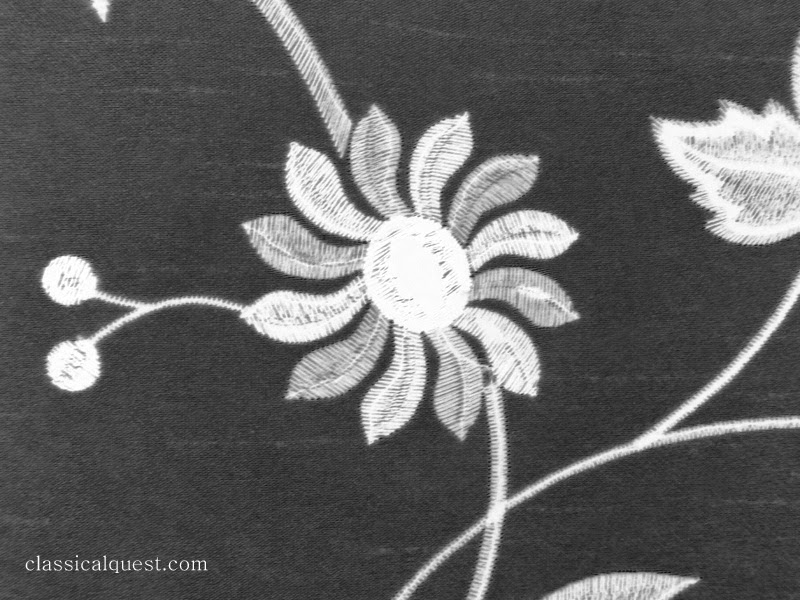It's been a while since I've put up a post; you're due for a special treat! I've got some goodies here today: my first children's book review, instructions on how to make a faux pietre dure box with decoupage, three patterns you may copy and print for your personal use, and a unit study guide. I've really enjoyed piecing all this together. Hope you enjoy!
+ + + + +
My oldest daughter is ten. She's pretty independent about selecting books for herself, but occasionally I give her a recommendation based on her interests.
My daughter loves art. She has sketched nearly every day since I first gave her a blank journal when she turned four. Her school friends often beg her for drawing lessons; she sometimes spends a good bit of her recess time patiently instructing them. At home, I refer to her as our "artist in residence." I haven't needed to buy a greeting card in six years! Many of our friends and family members have been blessed by her handmade gifts.
I was certain my daughter would appreciate Francesco, Artist of Florence: The Man Who Gave Too Much by Anita Mathias. I read it aloud to her, pausing occasionally to answer some of her questions and take careful note her responses to the images and text. It turned out to be quite a pleasurable and enriching experience for us.

Francesco is a skilled artist living in 16th century Florence. He is a compassionate man who is burdened with an ongoing internal struggle over how to price his work. Too often he sells his pieces for much less than they are worth. He cannot bear the thought that "anyone should yearn for beauty . . . and be unable to have it."

Francesco creates "paintings for eternity" in pietre dure, an elaborate technique in which polished colored stones are cut and fitted together to form images. These decorative pieces adorn objects such as chests, vases, fountains, bowls, tables, and panels.
We were amazed by the lush, colorful images of pietre dure in the book. We agreed that we'd like to run our hands over the smooth, cool surface of Francesco's treasures.
The little girl stares at it in silence, and glows. She is captivated.
"It's twenty florins," I say. It took me three hours to carve it, but the hours were joy.
Francesco's first person narrative helps us envision the unique struggles and quandaries an artist might have faced during the European Renaissance.
Francesco is weak at the skill of bartering and his customers know this. Many of them take blatant advantage of his generous nature. His wife is not pleased with his lack of business sense. She is concerned with the realities of life. They must have income!

My daughter and I were able to discuss ways she uses her skill to bless others. And we also talked about how it's okay for her to tell her friends when she doesn't want to spend her recess hour giving drawing lessons. I think she was relieved to hear a story about an artist who gave too much. Like Francesco, she has a very generous heart. She is learning that she doesn't have to say yes to every request. This book helped validate her need to set boundaries for herself.
Lord, I am you lily, even as those I carve. As the birds of the air are yours, even so am I. Will you not protect me? . . . Let me come to you as you let the children.
+ + + + +
Resources
Francesco, Artist of Florence: The Man Who Gave Too Much by Anita Mathias is available for purchase through Amazon. Go HERE to order from Amazon.com or HERE to order from Amazon.co.uk
Also by Anita Mathias -- Wandering Between Two Worlds: Essays on Faith and Art. Go HERE to purchase at Amazon.com or HERE to purchase from Amazon.co.uk
Visit the author's blog: Dreaming Beneath the Spires.
Follow her on Twitter: twitter.com/AnitaMathias1
Follow her on Facebook: facebook.com/dreamingbeneaththespires
Suggestions for Further Study
Francesco, Artist of Florence: The Man Who Gave Too Much is an excellent starting point for a unit study, perhaps as a summer project.
Watch this short silent video: "The Making of a Pietre Dure Panel." My entire family was impressed by this! I even played it for my dad when he came to visit.
Become familiar with the historical figures mentioned in the text -- artists such as Michelangelo, Leonardo da Vinci, Masaccio, Donatello, Brunelleschi, and Michelozzo. Also mentioned are members of the powerful Medici family of Florence. I've just started watching the four part series from PBS: "The Medici Godfathers of the Renaissance." Available to view on Youtube. (Not appropriate for young children.)
Make a reproduction of pietre dure out of polymer.
Study gemstones by reading Gemstones of the World by Walter Schumann. Younger children will enjoy Let's Go Rock Collecting by Roma Gans.
Observe various rocks and minerals in their natural state. We still have a kit from when we homeschooled. My daughter and I enjoyed observing uncut semiprecious stones after studying about pietre dure.
For some of the best examples of pietre dure on the web, scroll through this a preview of The Art of Semiprecious Stonework by Annamaria Giusti.
Discuss ways to show value for your own skill and time.
Talk to your child about sound business/financial practices. If he or she shows interest in entrepreneurship, read a book about business for kids.
Discuss ways to show respect for the time and skills of others.
Is it easier to forgive yourself or to forgive others? Consider these two courses of forgiveness.
Memorize the Lord's Prayer.
Florentine painter Domenico Ghirlandaio described pietre dure as "pittura per l'eternità" — painting for eternity. Why do you think he called it that?
In the US you can view pietre dure at LACMA.
And of course, you could view it in Florence, Italy!
For the pictures in this post, I made a faux pietre dure box using decoupage --
I used free marble scrapbook printables for the cut outs on the side panels.
The image of the bird on the top was printed to scale for my box.

To create the cutouts, I took a picture of the drapes in my dining room. I thought the flowers and leaves would make a nice decoupage motif.
Feel free to copy and print the three images below for your personal use:
Image 1
Image 2
Image 3
 |

Using small embroidery scissors, carefully cut out the patterns. Trace them onto the back of the colored marble scrapbook paper of your choice. Cut out the marbled piece. I used a small hole punch for the center of this flower. Glue your design to your black paper panels using Mod Podge and a paint brush.
To create wrinkle free decoupage you must apply a thin, even coat of Mod Podge. Allow to dry just a bit before applying paper. Smooth out all wrinkles. Be patient! Allow to dry completely between steps. Cut thin black strips to neatly cover the edges. Add cutouts and stone colored stickers to your side panels. (Or to the top, if you chose.) When all is dry, apply a top coat of Mod Podge High Luster as a varnish. I covered my box with three coats.
 |
Peace & Joy,
Adriana
P.S. If you enjoyed this post, I'd be delighted if you'd "like" Classical Quest on Facebook or follow me on Bloglovin, Twitter, or Pinterest!
Disclaimer: Anita Mathias gave me a free copy of her book in exchange for my honest review, which I gave joyfully without any pressure whatsoever!













This is a beautiful and interesting post in so many ways, Adriana! I was struck by Francesco's prayers for wisdom and his anticipation of "the everlasting banquet when the hard-nosed shall sit with the soft-hearted." I also loved the idea of "painting for eternity" -- it reminded me of an article I read about Canadian architect Raymond Moriyama, whose father gave him this short poem for a graduation present: "Into God's temple of eternity, drive a nail of gold." (Here is a brief article where he tells this story: http://www.magazine.utoronto.ca/all-about-alumni/raymond-moriyama-architect-canada-japanese-pow-camp/) Thank you for putting so much into this post: there's something for everyone, and the pictures are gorgeous as always.
ReplyDeleteThank you, Jeannie. I love this: "He did not ask me to build the temple. He wasn’t even asking me to design it. He was asking me to drive in just one nail – just one, but one forged of gold." Such a great article. So glad you shared it!
DeleteYour daughter learned much from the book, and I bet her best lesson was how great it is to learn side by side with mom.
ReplyDeleteI certainly do love learning side by side with her, Tim. She teaches me much! :-)
Delete